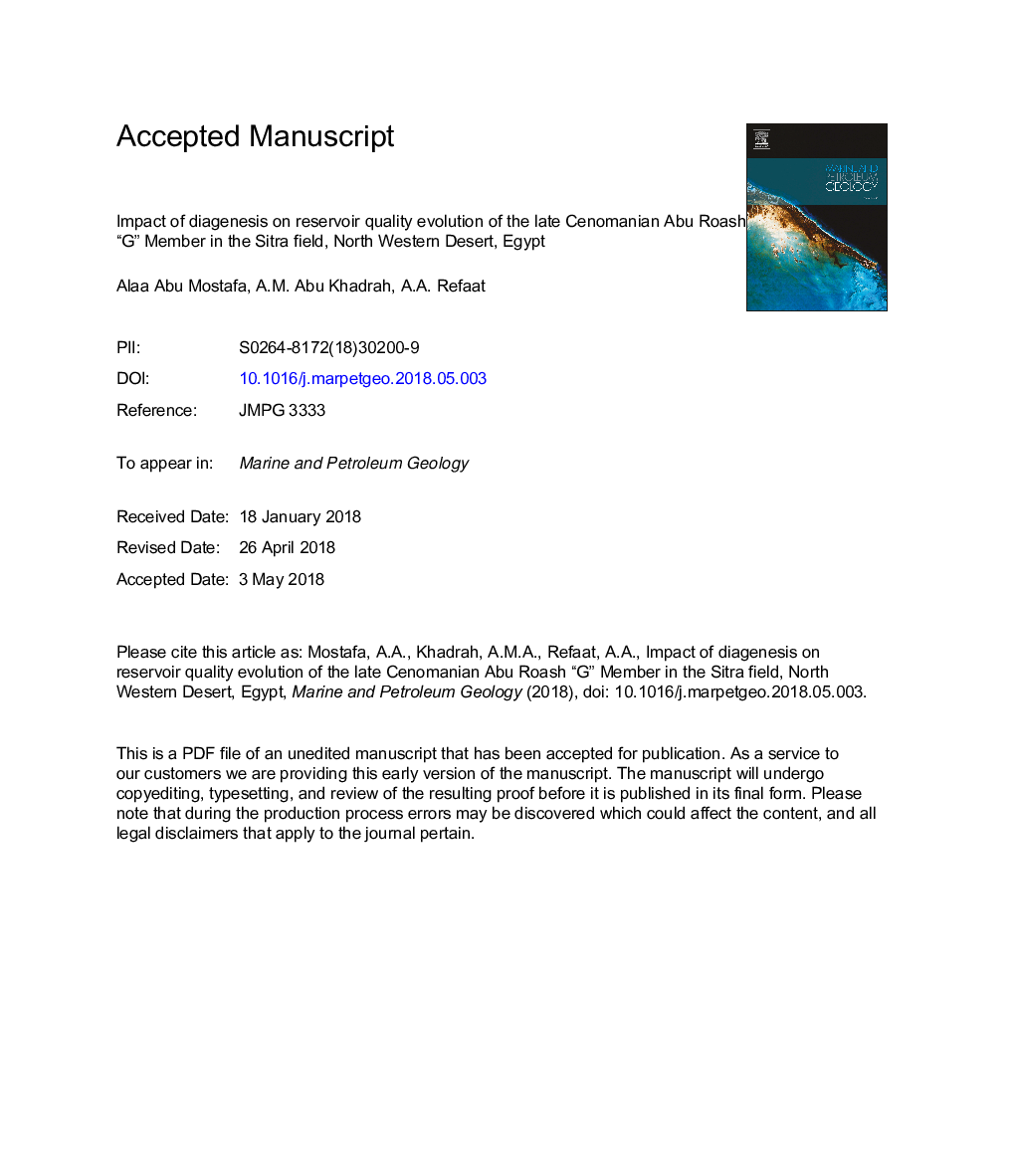| Article ID | Journal | Published Year | Pages | File Type |
|---|---|---|---|---|
| 8909044 | Marine and Petroleum Geology | 2018 | 24 Pages |
Abstract
Reservoir quality evolution of the Abu Roash “G” Member was studied by petrographical analyses from wells in the Sitra oilfield in the North Western Desert of Egypt. The sandstones of the Abu Roash “G” Member are predominately subarkose to quartz arenite and exhibit a wide range of porosity (1.2%-23.8%), and permeability (0.008-126â¯mD). Diagenetic features that influenced the reservoir-quality evolution include mechanical compaction, pressure solution, cementation and dissolution of framework grains and cements. Compaction and cementation are generally the main factors that were responsible for the reduction of porosity and permeability in the upper Abu Roash “G” sandstones. Dissolution of detrital feldspars grains was the main drive for porosity enhancement of the upper Abu Roash “G” sandstones. Additionally, the corroded contacts between successive carbonate phases and quartz grains followed by dissolution of the carbonate cements left behind secondary porosity. On the other hand, the main porosity preservation in the upper Abu Roash “G” sandstones is due to scattered patches of carbonate cement, which prevented compactional collapse of the sandstone framework and to grain-coating chlorites that inhibited the precipitation of quartz overgrowths during burial. The Abu Roash “G” Member reservoir was subjected to a high diagenetic overprint resulting in marked reservoir heterogeneity.
Related Topics
Physical Sciences and Engineering
Earth and Planetary Sciences
Economic Geology
Authors
A. Abu Mostafa, A.M. Abu Khadrah, A.A. Refaat,
